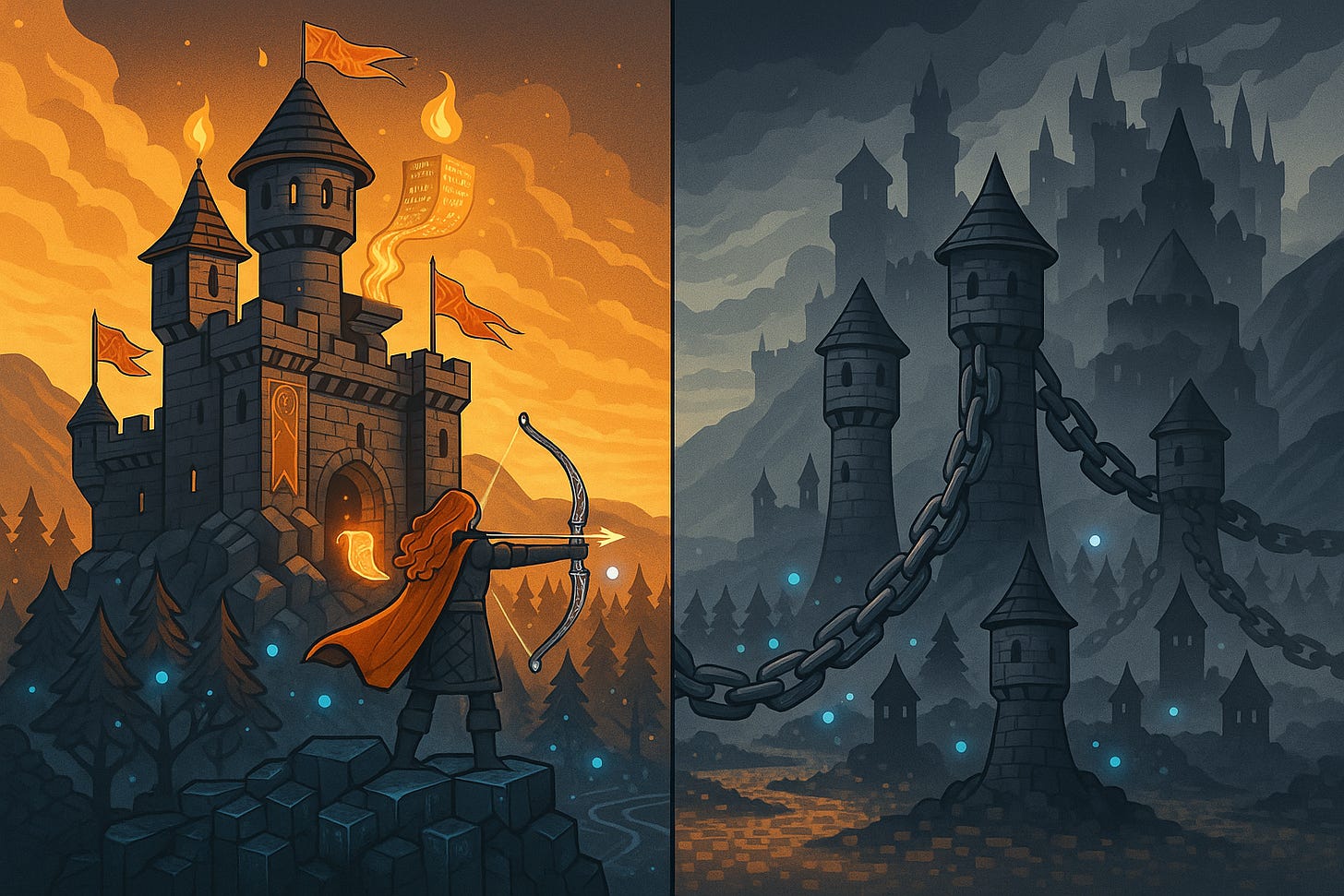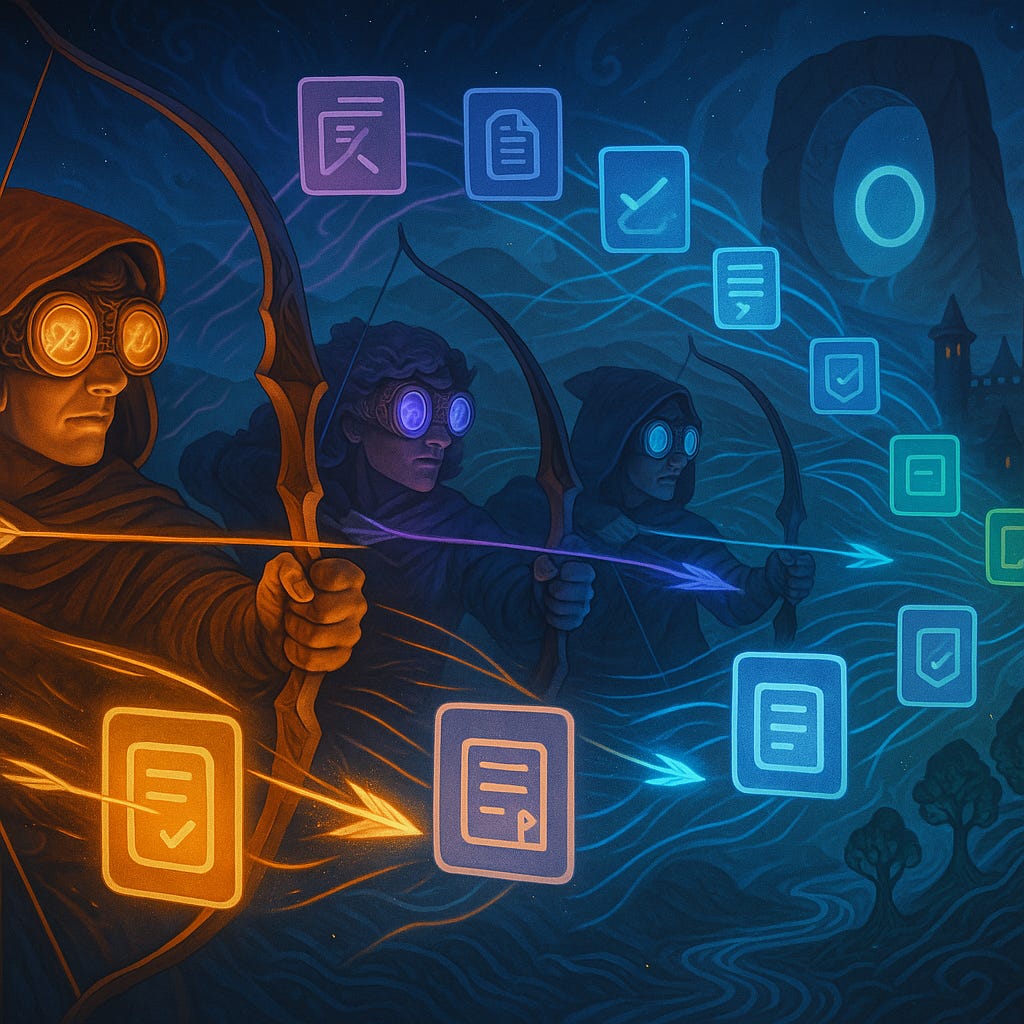Brave Search: The AI Infrastructure Play You Haven't Noticed
And Why It's Important for Developers
I don't typically write about search companies. My focus stays on agentic coding tools—the AI assistants and orchestration platforms transforming how we build software. But research capabilities are becoming the differentiator between useful AI coding tools and transformative ones. When your AI agent can't just generate code but also research best practices, find security advisories, and validate implementation patterns in real-time, the value proposition changes materially.
I've been tracking how AI tools handle web search, and one name keeps appearing in the technical documentation that most developers never notice: Brave Search. Not the browser—the search engine that's become essential infrastructure for AI applications.
When Claude searches the web, it uses Brave's API. Same with Mistral's Le Chat. According to Brave, "most of the top 10 AI LLMs" use their search infrastructure—though they won't specify which others due to confidentiality agreements. While everyone debates whether Google's search dominance will survive AI disruption, Brave positioned itself as the infrastructure layer that AI companies depend on.
The numbers support this positioning: 30+ billion indexed pages, 80% growth in organic searches and 1500% growth in ad clicks during 2024. This isn't just another Google competitor—it's infrastructure for the AI ecosystem.
The JavaScript Creator's Second Act
Brendan Eich created JavaScript in 10 days at Netscape. After briefly running Mozilla (until a political controversy ended his tenure), he founded Brave Software in 2015. His pitch wasn't just another browser—it was rebuilding the web's economic model through the Basic Attention Token (BAT) ecosystem, where users earn cryptocurrency for viewing ads.
That cryptocurrency experiment worked better than expected. Brave's business model distributes 70% of ad revenue to users while keeping 30%—exactly inverse of most advertising platforms. The model supported over 90 million users as of July 2025 and generated estimated annual revenue in the tens of millions.
The search engine emerged from Brave's acquisition of Tailcat in 2020. What started as offering browser users an independent search option evolved into critical infrastructure for the AI ecosystem. Search advertising revenue grew 1500% in 2024, attracting enterprise advertisers like Amazon Ads, Booking.com, Wayfair, and Nerdwallet.
Microsoft announced Bing API retirement effective August 11, 2025, leaving Brave as a leading independent search API option at global scale. For AI developers who need alternatives to Google, Brave has become increasingly important.
Building Independence While Others Accepted Dependency
Most Google alternatives rely on other engines. DuckDuckGo sources largely from Bing. Startpage proxies Google results. Privacy-focused engines like Searx aggregate multiple search engines' results.
Brave built its own index. 30+ billion pages, updated with 100+ million page changes daily. The technical complexity of maintaining an independent web index explains why so few companies attempt it—and why Brave's achievement provides value for AI applications.
The Web Discovery Project addresses a classic search problem: identifying which pages humans actually find useful versus SEO spam. Brave uses anonymous browsing data from opt-in browser users to understand real usage patterns. The system requires at least 20 different users to visit a URL before considering it for inclusion, filtering out manufactured SEO content.
The privacy implementation uses Brave's STAR protocol, which makes it mathematically impossible to trace browsing data back to specific people. The efficiency gains are significant: processing 1 million submissions costs $0.47 versus $1,115 for competing privacy systems—a 1773x performance improvement. Client operations complete in 0.628 milliseconds. Server aggregation handles millions of submissions in under 74 seconds.
The crawler operates without advertising a distinct user agent and follows the same robots.txt rules as Googlebot to avoid discrimination from websites that only permit Google's crawler. This technical decision reflects a practical strategy: build infrastructure that works within existing web standards rather than demanding special treatment.
Claude's Search Secret and the Broader AI Integration
The Claude-Brave connection surfaced in March 2025. TechCrunch reported that Anthropic had quietly added Brave Search to its subprocessor list. Software engineer Antonio Zugaldia first noticed the change, later confirmed by Simon Willison who found citation matches between Claude and Brave Search results.
Mistral's Le Chat also uses Brave's API for its Deep Research mode, according to the same TechCrunch reporting. Brave claims partnerships with "most of the top 10 AI LLMs"—their phrasing, not mine. Given the API landscape, I'd guess OpenAI and Google are among the holdouts, but that's speculation.
Why does this arrangement work for AI companies? Brave's API starts at $5 per 1,000 queries for Base AI and $9 per 1,000 for Pro AI. Google's Programmable Search JSON API also charges $5 per 1,000 queries—so pricing is comparable. The differentiation comes from rate limits, terms, and independence. Brave's independence means no single Big Tech company can revoke access or change terms arbitrarily.
Brave reports widespread developer adoption for their API. Integration with AWS Marketplace's AI Agents category and support for Model Context Protocol (MCP) facilitates enterprise adoption.
Ranking Algorithms Different From Google's Approach
Brave's search algorithm differs from Google's link-based authority model. Rather than PageRank variants that prioritize domain authority and backlink profiles, Brave emphasizes content quality and freshness using anonymous browsing data from the Web Discovery Project.
This produces different results. Sites dominating Google's first page sometimes don't appear in Brave results at all. Publishers accustomed to Google's ranking factors find their strategies less effective—creating both opportunities and challenges for content creators.
The Goggles system represents Brave's notable departure from traditional search. Users create custom ranking rules using simple text files, democratizing search result ordering. Popular community Goggles include "No Pinterest" (removes Pinterest from results), "Tech Blogs" (boosts technical content), and filters for political perspectives or programming languages.
Technical implementation allows precise control: boost specific domains, discard spam sources, prioritize recent content. Community-created Goggles demonstrate sophisticated filtering strategies that would require expensive enterprise search solutions in traditional systems.
For publishers, Brave offers limited tooling compared to Google. While Brave now provides a URL submission form, they lack comprehensive webmaster tools like Google Search Console or Bing Webmaster Tools. Publishers can't access detailed analytics, monitor search performance, or debug indexing issues systematically.
Schema markup support remains limited compared to Google's extensive rich results ecosystem. Brave processes standard Schema.org markup and displays featured snippets, but the range of supported rich result types falls short of Google's implementation. Without testing tools or comprehensive documentation, publishers implement schema with limited feedback.
Market Positioning Through Convergence of Factors
Brave's 80% increase in organic searches and 1500% growth in advertising clicks during 2024 reflects several market dynamics. Privacy regulations like GDPR create compliance burdens for surveillance-based models while benefiting privacy-by-design architectures. Google's antitrust challenges open opportunities for alternatives.
The API-first strategy aligned well with AI application growth. As a leading independent search API commercially available at global scale, Brave provides infrastructure for developers seeking alternatives to Big Tech dependencies. Enterprise customers including Amazon Ads, Booking.com, Wayfair, and Nerdwallet validate the platform's commercial viability.
Competition exists but faces constraints. DuckDuckGo's Microsoft dependency limits flexibility. Smaller independent indexes like Mojeek serve specific niches. Qwant operates a mixed model with partial independence. The upcoming Bing API retirement reduces options further. Pure AI search engines like Perplexity face infrastructure challenges that Brave addressed through years of index building.
Future roadmap priorities include expanding the Leo browser assistant toward agentic AI capabilities, developing specialized search API verticals, and advancing AI grounding features. The company projects capturing 3-5% global search market share in conservative scenarios, with potential for higher share under increased regulatory pressure on Google.
An Underappreciated Infrastructure Play
Brave Search's emergence as AI infrastructure differs from typical Google competitor narratives. By maintaining independence while others accepted dependencies, Brave created value that became increasingly relevant as AI applications proliferated.
For developers building AI applications, Brave provides a significant alternative to Google's search infrastructure. Competitive pricing, technical reliability, and independence from individual platform gatekeepers position it as infrastructure for AI-powered applications.
The limited webmaster tools and different ranking algorithms require publishers to adapt their strategies. Reduced emphasis on domain authority could create opportunities for quality content. The Goggles system offers user control over search results, potentially affecting traditional SEO economics.
The next few years will determine whether Brave's independent infrastructure becomes foundational for a more diverse search ecosystem. Current indicators—growth metrics, enterprise adoption, and AI partnerships—suggest momentum. The company that started as a privacy-focused browser is affecting the search landscape through its role as infrastructure that AI applications increasingly rely on.
For those of us building with agentic coding tools, this infrastructure layer has practical implications. The quality of our AI assistants depends on their ability to access current information, validate patterns, and research solutions. When Claude helps debug a production issue or when an AI agent researches security patches, that capability flows through search infrastructure. Understanding who provides that infrastructure—and what alternatives exist—informs how we evaluate tool capabilities and dependencies.
Brave's role as search infrastructure for AI extends beyond technical curiosity. It affects the practical capabilities that make AI development tools useful in production. In agentic coding, the distinction between AI that generates code versus AI that can research, validate, and adapt based on real-world data defines the tool's actual utility.
Related reading: The Other Shoe Will Drop - my analysis of AI pricing sustainability and how infrastructure costs affect tool viability
Tracking the technical architecture behind AI search integrations? I'm documenting how these systems affect agentic development workflows. Let me know what aspects of the search-to-AI pipeline interest you most.






